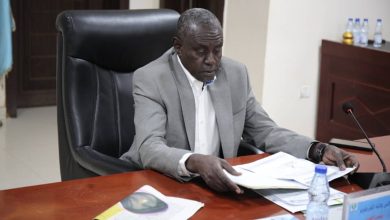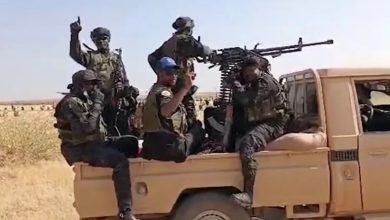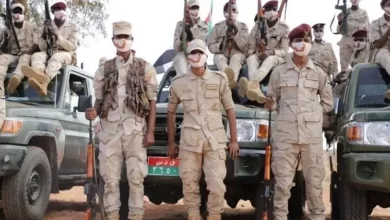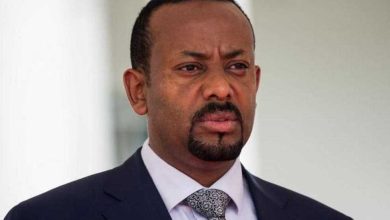Reports
Sources of Flow
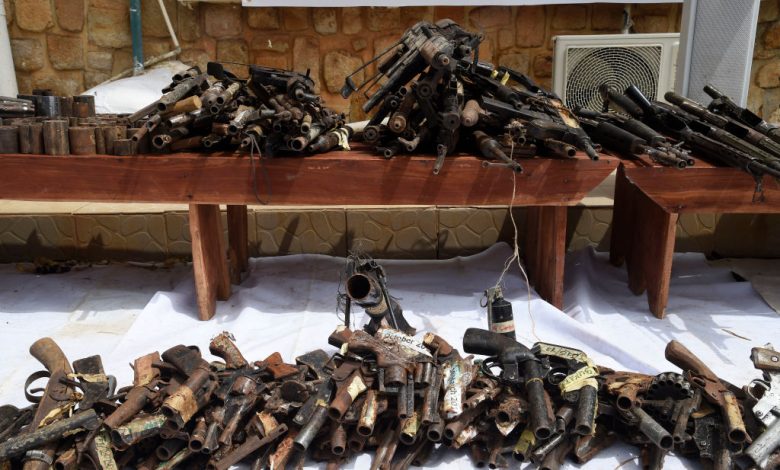
Mohamed Saleh Omar
The sources of small arms and light weapons (SALW) in Africa are numerous, ranging from manufacturers to end-users, with a series of networks and brokers operating mostly in secrecy. This creates difficulties in identifying the real actors in this chain. The Stockholm International Peace Research Institute (SIPRI) mentioned in a report on illicit small arms and light weapons that there are three main sources of SALW flows:
Government Stockpiles: These are legitimate weapons held by governments. According to arms monitoring reports, these are considered one of the main sources of weapons that reach non-state armed groups. Looting of government stockpiles or attacking government military bases is one of the main tactics through which armed groups acquire weapons. Alternatively, some government officials might facilitate the leaking or sale of weapons to actors outside governmental frameworks in the illegal arms market.
External Sources of Weapons: These sources refer to weapons supplied to entities under embargo from outside the embargoed state and then transferred to unauthorized users. Many international sources have documented numerous cases of this kind. International external actors exploit abnormal circumstances, which might include states or transcontinental groups that do not adhere to laws and arms embargo resolutions in specific regions. The weak borders between African countries and governments’ inability to control them aid in this.
Smuggling: Smuggling is another source of the spread and flow of small arms and light weapons in Africa. Smuggling groups exploit countries with weak security or collapsing states to smuggle weapons to neighboring regional states. This has contributed to the spread of cross-border armed groups, causing insecurity and decreasing stability.
Factors of Spread Armed Conflicts: Ongoing conflicts in Africa contribute to the presence of weapons in many communities because fighters who participated in these conflicts do not relinquish their weapons. According to the African Disarmament Forum, small arms and light weapons are the main weapons used in internal conflicts and local disputes, whether sectarian conflicts, local wars, or armed rebellions. Most rebellions rely heavily on small arms and light weapons, which have exacerbated conflicts and fueled disputes in many African countries, playing a central role in destabilization.
Fragile and Long Borders: Borders are one of the weak points of African states due to their fragility and length between some countries, which weakens the states’ ability to control them. This, in turn, encourages outlaw groups to exploit these gaps to their advantage. In many African countries, smuggling and illegal small arms trade groups are active in border regions, increasing the security burden and the costs of the consequences arising from such gaps.
Weak Regional Cooperation: African officials have discussed at several forums and conferences, convened specifically to discuss SALW flows in Africa, the weakness of cooperation among countries in the face of the many gaps that individual countries suffer from. These officials acknowledged that the lack of joint cooperation is one of the reasons for the proliferation of weapons and the multiplication of actors causing security chaos in the African continent.
Transcontinental Crime: Transcontinental crime in Africa is defined as crimes committed across the national borders of states, which may be committed by individuals or groups in one state across the borders of several states. This includes drug trafficking, human trafficking, internet fraud, prepaid systems, maritime piracy, illegal manufacturing of firearms, firearms trade, theft, and oil smuggling. Such crimes are often committed using small arms and light weapons.
The use of SALW has contributed to the collapse of law, public order, and institutions in many African countries. It has been noted that the proliferation of SALW has increased the frequency of transcontinental crimes.
Efforts to Curb Weapons Proliferation
The massive flow of SALW remains a major concern for the African continent, which has inherited numerous conflicts from Western colonialism that have increased both horizontally and vertically after independence. This has necessitated exceptional individual and collective efforts as conflicts attract outlaw groups and war-trading organizations.
Since the African Union’s declaration in 2000, efforts have been focused on the issue of arms reduction among other elements. The Union launched several initiatives, most notably the announcement of the African Amnesty Month for the surrender and collection of illegal weapons, which was announced in September 2017.
This declaration builds on the main initiative launched by the African Union in 2013 under the title “Silencing the Guns Initiative,” which was framed within the Africa 2063 Agenda, a strategic African plan for social and economic transformation over fifty years starting from 2013. The leaders of the African Union committed not to pass on the conflict to the next African generation and to end all conflicts in the continent.
Sub-Regional Initiatives
In alignment with the African Union’s efforts, several initiatives are active in various African regions aiming to control the flow of illicit weapons, relying on a set of local and international agreements.
Economic Community of West African States (ECOWAS): ECOWAS bases its efforts to control SALW on the community’s 2006 convention, the “Convention on the Control of the Production, Circulation, and Possession of Civilian Small Arms and Light Weapons,” as a collective measure against the phenomenon that always drives insecurity in West Africa. Article 18 of the convention calls on member states to mark weapons and maintain a database of weapons in government stockpiles. According to numerous reports, ECOWAS is one of the most advanced groups in sub-Saharan Africa in this area. The regional group has coordinated efforts to address the proliferation of SALW by establishing a center called the “Regional Center on Small Arms,” under which 15 countries are united. The center is tasked with capacity building and monitoring the implementation of the Nairobi Protocol for the Prevention and Control of Small Arms and Light Weapons in the Great Lakes Region and the Horn of Africa. It emphasizes the strict implementation of the UN’s International Tracing Instrument, which allows countries to track SALW in a timely and reliable manner.
Central African Regional Zone: Known as the Economic Community of Central African States (ECCAS), the group announced an agreement in 2017 to monitor SALW, which was signed by the member states after seven years of negotiation and has since come into effect.
North Africa and the Sahel Region: This group has implemented several measures to address physical security and stockpile management through the United Nations Regional Center for Peace and Disarmament, with financial support from the European Union and the United Nations Office for Disarmament Affairs. The initiative focused on enhancing regional security in six Sahel countries.
Challenges and Obstacles
The African Union adopted the initiative to end conflicts in Africa by 2020 in the first plan. However, the excessive ambition in the plan, according to some African experts, led the Union to extend it until 2025. At the same time, there are significant challenges to achieving the “Silencing the Guns” goal, primarily funding, which poses the biggest obstacle, leading to reliance on external sources, opening the door to flawed external interventions.
Additionally, African Union leaders have complained about the slow response of African states to such initiatives. According to Union sources, only 14 countries have signed the African Arms Trade Treaty, which helps in implementing the initiative. Weak coordination among African countries in implementing initiatives is also one of the difficulties the Union faces in carrying out the relevant initiatives. There is a need for serious timelines, based on building the self-capacity of states to maximize their contribution to the initiative. The African Union Peace and Security Council needs to develop a comprehensive vision and specific programs regarding the “African Union Conflict and Sanctions Systems,” which requires ratification by Union member states as it is essential for achieving the goals of the Silencing the Guns Initiative.
